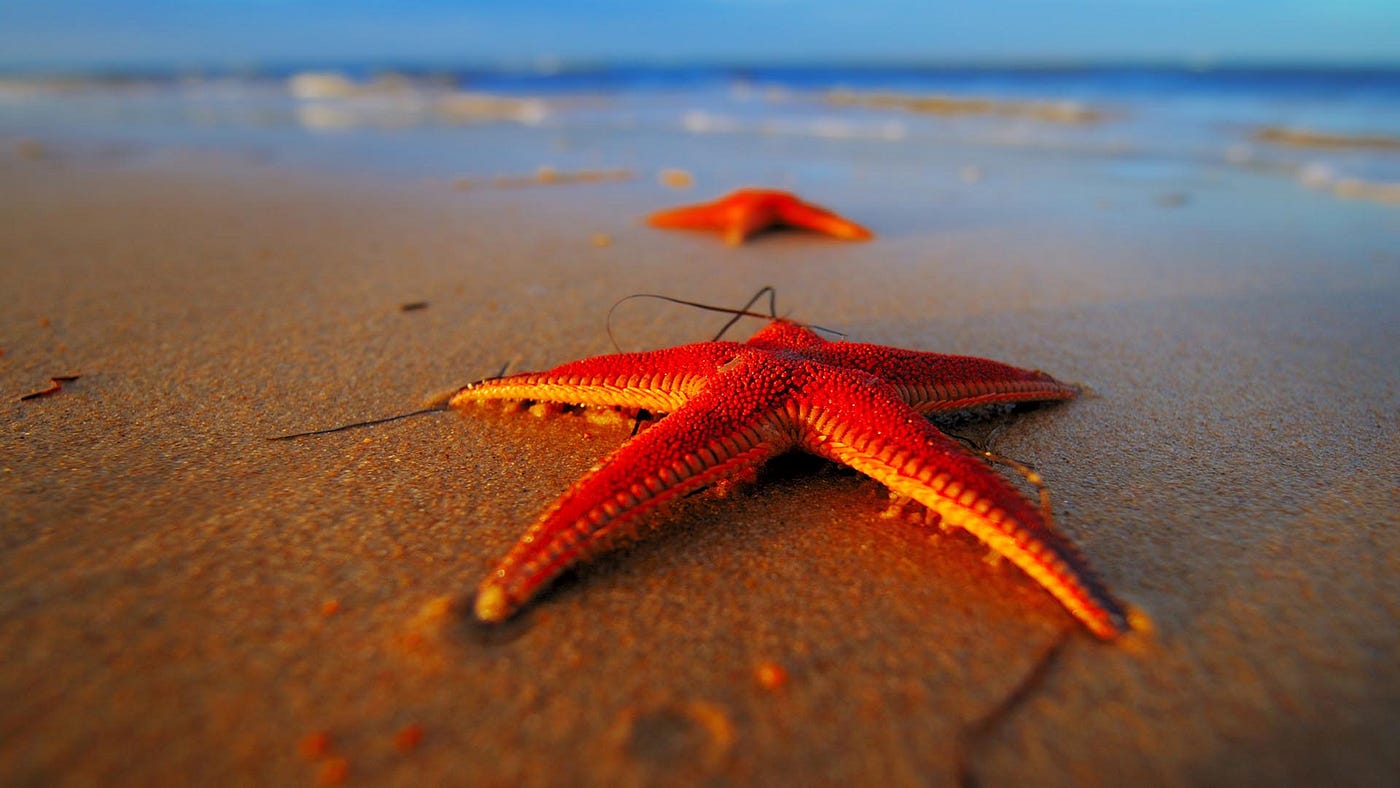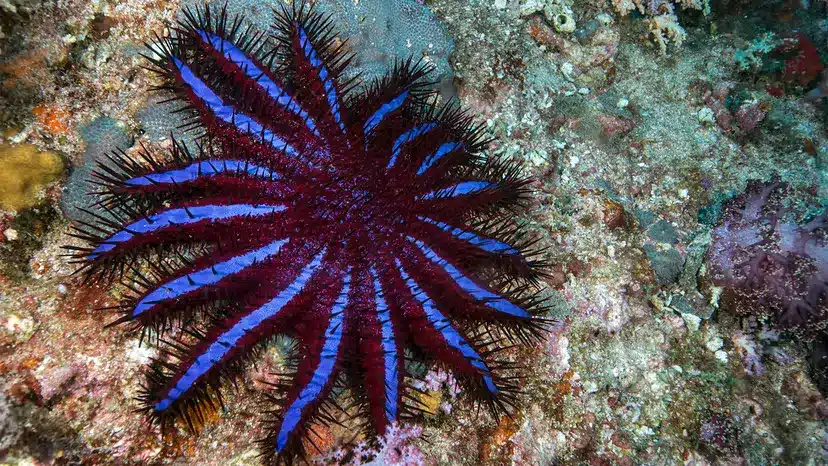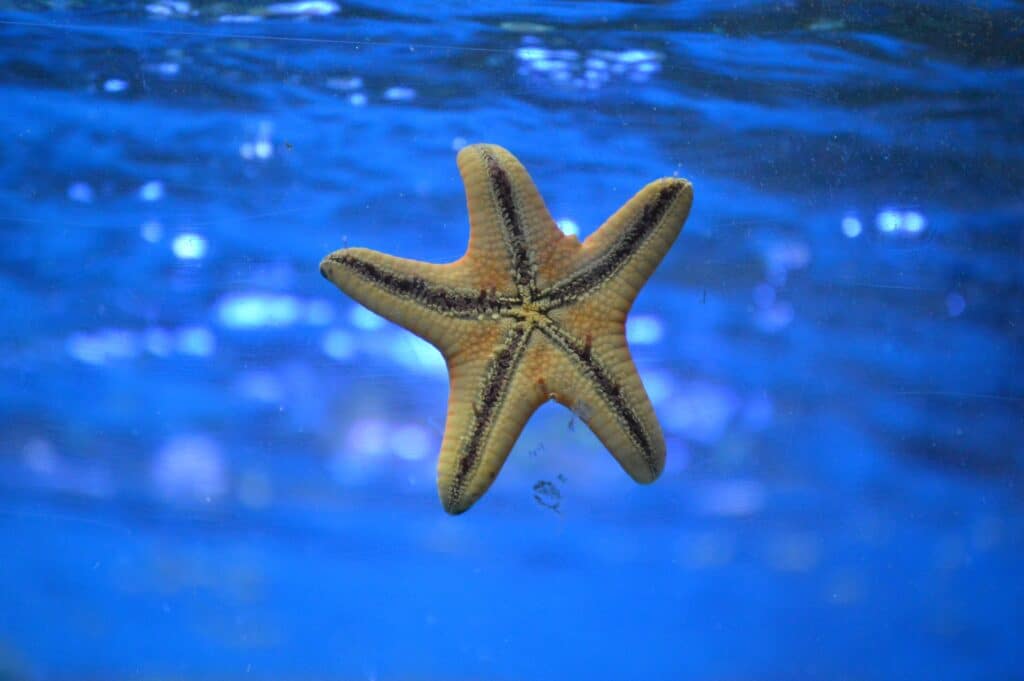Does A Starfish Have A Backbone

Introduction
Does A Starfish Have A Backbone: The enigmatic and mesmerizing starfish, with its distinctive radial symmetry and captivating underwater existence, has long piqued the curiosity of both scientists and nature enthusiasts alike. One of the most intriguing questions about these marine creatures is whether they possess a backbone, or in more scientific terms, a vertebral column. This seemingly simple query delves into the heart of starfish anatomy and classification, revealing fascinating insights into their evolutionary history and biological adaptations.
At first glance, starfish may appear to be simple organisms, but beneath their graceful appearance lies a complex web of biological structures and adaptations. To answer the question of whether starfish have a backbone, we must unravel the intricacies of their internal anatomy. While starfish lack a vertebral column composed of bones like mammals or reptiles, they do possess a unique and intricate skeletal system known as the endoskeleton.
This endoskeleton consists of numerous small calcified plates, or ossicles, embedded within their soft tissue, providing support and protection. These ossicles, connected by a network of ligaments and muscles, enable starfish to move, grip prey, and maintain their distinctive shape. The presence of this calcified structure raises intriguing questions about the evolutionary relationships between starfish and other marine life forms, shedding light on the broader context of biodiversity and adaptation in our oceans.
We will venture into the depths of starfish anatomy, uncovering the mysteries of their skeletal structure, and ultimately, addressing the question of whether these remarkable creatures can be said to have a “backbone.” Through scientific inquiry and a journey into the world of these captivating marine denizens, we will gain a deeper appreciation for the diversity and wonder of life beneath the waves.

How many bones does a starfish have?
Answer. star fish actually do not have bones , but have series of hard plates that act as skeleton and provide support.
Starfish, despite their name, do not have bones in the way humans or other vertebrates do. Instead, they possess a unique and intricate internal structure known as an endoskeleton. This endoskeleton is composed of numerous small, calcified plates called ossicles, which are embedded within the soft tissues of the starfish.
The number of ossicles in a starfish can vary depending on the species and size of the individual. Smaller species may have fewer ossicles, while larger ones can have hundreds or even thousands of them. These ossicles are interconnected by a network of ligaments and muscles, allowing the starfish to move and maintain its shape.
The endoskeleton serves several crucial functions for the starfish. It provides support and rigidity to the animal, allowing it to exert force when moving or capturing prey. It also helps protect the delicate internal organs of the starfish from external threats.
So, while starfish don’t possess bones like mammals, they do have a unique and highly adapted internal structure that enables them to thrive in their underwater environments. This remarkable adaptation is just one example of the incredible diversity of life on Earth and the creative solutions that evolution has produced for survival in different ecological niches.
Does starfish have a skeleton?
Starfish have an endoskeleton.
This skeleton is made of calcium carbonate plates known as ossicles and forms granules or spines. Different species have differing skeletons to offer a variety of protection.
Starfish, despite their delicate and graceful appearance, do indeed have a unique skeletal system known as an endoskeleton. However, it’s important to note that their skeletal structure differs significantly from the bones found in mammals or vertebrates.
The starfish’s endoskeleton is composed of numerous small, calcified plates called ossicles. These ossicles are embedded within the starfish’s soft tissue, forming a network that provides support and protection. The ossicles are connected by ligaments and muscles, allowing the starfish to maintain its distinctive shape and flexibility.
This skeletal system serves several essential functions for starfish. Firstly, it provides structural support, allowing the starfish to move and exert force when crawling or capturing prey. Secondly, it offers protection for the delicate internal organs of the starfish, safeguarding them from external threats.
While starfish do not possess a traditional bone structure like humans or other vertebrates, they do have an intricate endoskeleton made up of calcified plates. This unique adaptation highlights the diversity of skeletal structures found in the animal kingdom and underscores the remarkable ability of nature to craft solutions that suit each species’ specific needs.
Why is a starfish a vertebrate?
Sea stars, like sea urchins and sand dollars, do not have backbones, which makes them part of a group called invertebrates. Fish have backbones, which makes them vertebrates. Got it? Most sea stars sport spiny skin and five arms, although some can grow as many as 50 arms.
A starfish is not a vertebrate; it is, in fact, an invertebrate. The term “vertebrate” refers to animals that have a backbone or spinal column, which includes mammals, birds, reptiles, amphibians, and fish. Starfish, on the other hand, belong to the phylum Echinodermata, a group of marine invertebrates.
Starfish are characterized by their radial symmetry and a unique internal skeletal structure called an endoskeleton, which is composed of calcified plates known as ossicles. While this endoskeleton provides support and protection to the starfish, it is fundamentally different from a vertebrate’s backbone. Vertebrate backbones are made up of bones (vertebrae) that encase and protect the spinal cord, whereas starfish have no spinal cord or vertebral column.
The distinction between vertebrates and invertebrates is a fundamental one in biology, reflecting the presence or absence of a backbone. Starfish fall squarely into the invertebrate category, showcasing the remarkable diversity of life on Earth. Their fascinating biology, including their ability to regenerate lost limbs and their unique water vascular system, makes them a subject of great interest in the study of marine biology, but they are definitively not vertebrates.
Do starfish have no bones?
Although starfish are invertebrates, they do have a kind of skeleton. The bodies of starfish are composed of calcium carbonate plates, known as ‘ossicles’. These form the endoskeleton, which takes on a variety of forms such as spines and granules. They have a primitive nervous system, but not a brain.
Correct, starfish do not have bones in the way that vertebrates (animals with backbones) do. Instead, they possess a unique internal structure known as an endoskeleton. This endoskeleton is composed of a series of interlocking calcium carbonate plates, which provide support and protection for the starfish’s internal organs.
The endoskeleton is located within the body of the starfish and extends from the central disk, radiating outward into the arms. It gives the starfish its distinctive star-shaped appearance. This structure is flexible yet durable, allowing the starfish to navigate its aquatic environment effectively.
Starfish belong to a group of marine invertebrates called echinoderms, which includes sea urchins, sand dollars, and sea cucumbers. This group is characterized by a lack of a vertebral column or backbone, setting them apart from vertebrates like fish, mammals, reptiles, birds, and amphibians.
How do starfish live without blood?
Instead of blood, seawater is pumped through their body as a replacement, with the water providing key nutrients to starfish which allows its organs to function properly.
Starfish, like other echinoderms, have a unique circulatory system that operates without conventional blood. Instead of blood, they rely on a water vascular system to transport nutrients, oxygen, and waste products throughout their bodies.
This system consists of a series of fluid-filled canals and chambers. Seawater is drawn into the starfish’s system through a specialized structure called the madreporite, which acts like a sieve, filtering out impurities. From there, the water travels into a central ring canal encircling the mouth at the center of the starfish.
The ring canal is connected to radial canals that extend into each arm. Along these radial canals are lateral canals, which are further connected to ampullae, bulb-like structures at the end of tube feet. These tube feet play a crucial role in locomotion, feeding, and respiration.
Nutrients and oxygen diffuse directly from the water in the canals into the cells of the starfish’s tissues. This unique system allows for efficient gas exchange and nutrient distribution without the need for a centralized circulatory system and blood.
Starfish have evolved a specialized water vascular system that meets their physiological needs without the use of blood. This adaptation highlights the incredible diversity of life on Earth and showcases the various solutions nature has developed to address the challenges of survival in different environments.
What is the structure of a starfish’s body like if it doesn’t have a backbone?
A starfish, despite lacking a traditional backbone or vertebral column, possesses a remarkable and unique internal structure known as an endoskeleton. Comprising a series of interconnected calcium carbonate plates, the endoskeleton provides support and protection for the starfish’s delicate internal organs. This intricate framework extends from the central disk, radiating outward to the arms, forming a distinctive star-like shape.
Surrounding the endoskeleton lies a network of complex hydraulic canals, collectively known as the water vascular system. This system serves multiple crucial functions, including locomotion, respiration, and feeding. At the center of this system is a water-filled ring canal encircling the mouth, which is connected to radial canals extending into each arm. Tube feet, small protrusions located on the ventral side of the starfish, are operated by this hydraulic system. They play a pivotal role in locomotion, allowing the starfish to move, grasp, and manipulate objects.
Unlike creatures with backbones, starfish belong to a group of marine invertebrates called echinoderms. Their body plan demonstrates a remarkable adaptation to their environment, showcasing the diversity of life forms that have evolved on our planet. The absence of a conventional backbone highlights the ingenious ways in which nature has developed alternative structural solutions for support and locomotion in the animal kingdom.
Are starfish related to animals with backbones, like fish or mammals?
Starfish, scientifically known as sea stars, belong to a separate branch of the animal kingdom called Echinodermata. This group includes sea urchins, sand dollars, and sea cucumbers. They are not closely related to animals with backbones, such as fish or mammals. Instead, starfish are part of an evolutionary lineage that diverged from vertebrates over half a billion years ago.
Animals with backbones, scientifically known as vertebrates, belong to the subphylum Vertebrata within the phylum Chordata. This diverse group encompasses mammals, birds, reptiles, amphibians, and fish. Vertebrates share a common characteristic: the presence of a vertebral column or spine made up of individual bones called vertebrae.
In contrast, echinoderms like starfish possess a radically different body plan. They exhibit a unique water vascular system, lack a centralized brain, and typically feature radial symmetry. This means their bodies are arranged around a central point, much like spokes on a wheel, as opposed to the bilateral symmetry seen in most vertebrates.
While starfish and vertebrates are both fascinating branches of the animal kingdom, their evolutionary paths diverged early on, leading to distinct anatomies and lifestyles. This divergence highlights the incredible diversity and complexity of life on Earth.
Do any marine animals have both a backbone and a similar appearance to starfish?
There are marine animals that possess both a backbone and a similar appearance to starfish. One such example is a group of marine creatures known as brittle stars. Brittle stars are echinoderms, just like starfish, and they share a common ancestor. However, they belong to a different class called Ophiuroidea.
Brittle stars exhibit a similar radial symmetry and have long, flexible arms like starfish. Unlike starfish, however, brittle stars have a more distinct separation between their central disk and arms. They also have a more slender and delicate appearance.
What distinguishes brittle stars from starfish is that they do have a rudimentary form of a backbone. While they lack a true vertebral column, they possess a series of small, calcified plates within their arms, providing some structural support.
Another marine animal with a backbone that shares a vague resemblance to starfish is the sea cucumber. Sea cucumbers belong to the same phylum, Echinodermata, as starfish. However, they are part of a different class known as Holothuroidea. Sea cucumbers have a cylindrical body with soft, leathery skin and tube-like feet used for locomotion.
While these animals have some similarities in appearance, they each belong to distinct branches of the animal kingdom, showcasing the diverse array of forms that can evolve within the marine environment.

Conclusion
While starfish do not possess a vertebral column made of bones, like mammals or other vertebrates, they have an intricate internal structure known as the endoskeleton. This endoskeleton, composed of calcified plates or ossicles, serves as their unique support system, providing them with the ability to move, capture prey, and maintain their iconic shape.
This revelation about the starfish’s anatomy underscores the remarkable adaptability and diversity of life in our oceans. It reminds us that nature often finds ingenious solutions to the challenges of survival. Starfish’s evolutionary path, distinct from that of vertebrates, showcases the rich tapestry of life on Earth.
Moreover, our exploration into the world of starfish anatomy highlights the importance of scientific inquiry and curiosity. Asking questions about the natural world, even seemingly simple ones, can lead to profound discoveries and a deeper understanding of the complex web of life on our planet.
In the end, while starfish may not have a backbone in the traditional sense, they certainly possess a captivating and intricate internal framework that enables them to thrive in their underwater habitats. The quest to understand the natural world, like the enigmatic starfish itself, continues to be a source of wonder and enlightenment for all who embark on it.



